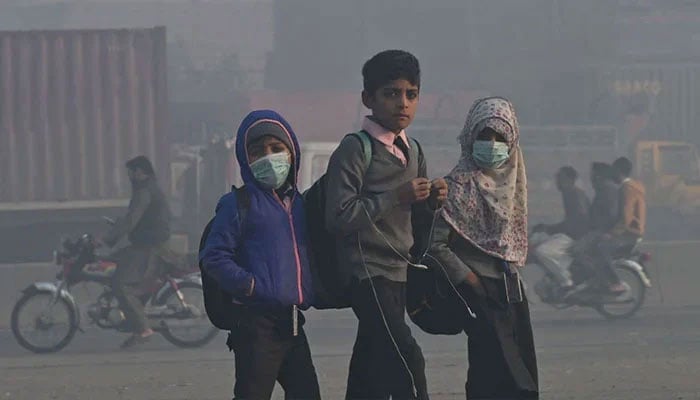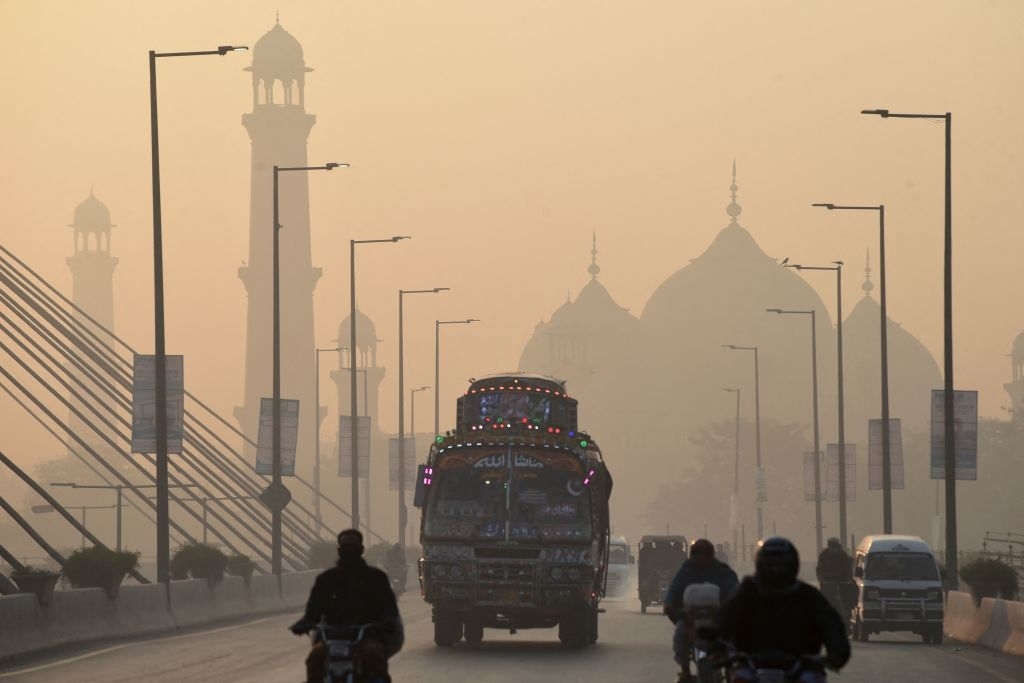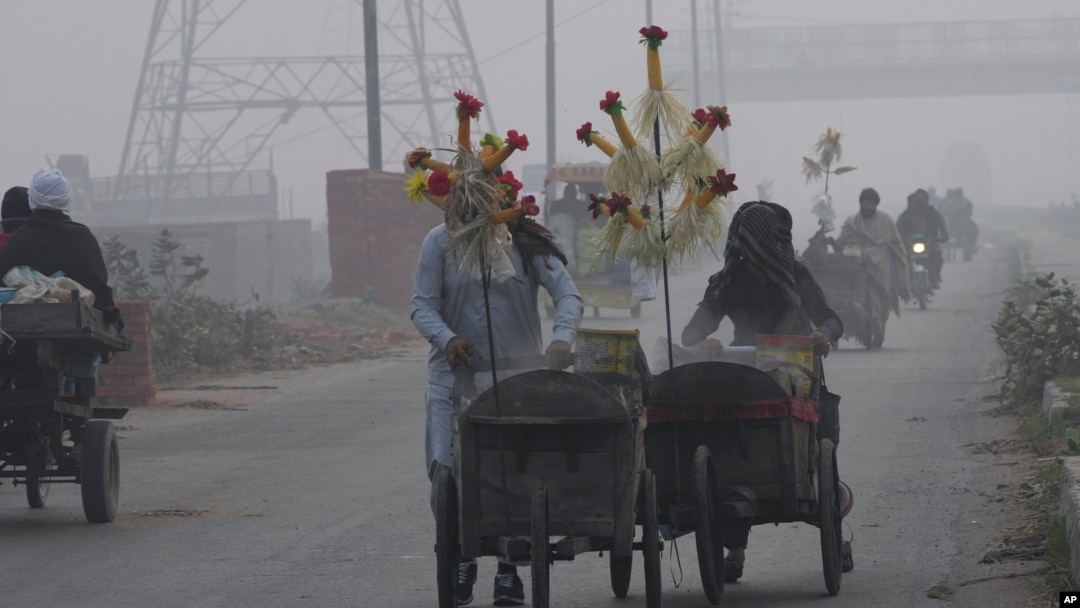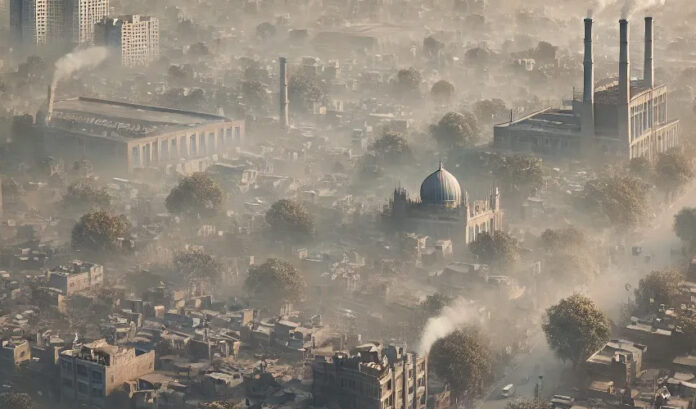Every winter, Pakistan’s skies take on a sinister hue, transforming from clear blue to a thick, greyish blanket that envelops entire cities. It is smog—the silent invader that creeps in as the temperature drops, obscuring the sun and making it harder to breathe. For many, it’s an inconvenient nuisance; for others, it’s a life-threatening hazard.
In cities like Lahore, Karachi, and Islamabad, the presence of smog is no longer just a seasonal problem—it’s a persistent environmental crisis.
But what’s behind this growing epidemic? Why is smog spreading across Pakistan with such intensity? To answer this, we need to understand the complex web of factors contributing to the haze—and more importantly, how we can take action to reverse the damage.
When did smog become problem in Pakistan?
While smog has been a regular feature of Pakistan’s winters, its intensity and duration have been steadily increasing over the years. The phenomenon, which began to catch widespread attention in the early 2000s, reached a dangerous tipping point in November 2016 when Lahore was officially labelled as the most polluted city in the world.
The rise in pollution levels was attributed to a variety of factors, including industrial emissions, vehicular exhaust, and burning of crop residue in neighbouring Indian states.

But it wasn’t until the outbreak of smog in November 2021 that the situation took an even graver turn. The thick blanket of haze that covered the city made it nearly impossible for citizens to breathe, with many suffering from respiratory issues, flu, and colds.
Lahore, once again, found itself at the centre of this environmental crisis, with alarming air quality index (AQI) readings. The highest recorded AQI reached 680 in the Kot Lakhpat area, far exceeding safe limits and putting lives at risk.
For context, an AQI over 300 is considered hazardous to health, and anything above 500 is classified as a severe emergency.

What’s causing smog in Pakistan?
The causes of smog in Pakistan are multifaceted, involving a mix of natural and human-induced factors. Some of these factors are controllable, while others are a consequence of larger, systemic issues. Let’s break down the major contributors:
- Vehicle emissions: One of the most significant contributors to smog in urban areas is vehicle emissions. Pakistan’s rapidly growing urban population and expanding motor vehicle fleet have led to a surge in pollutants released into the atmosphere. Old, poorly maintained vehicles—especially in cities like Lahore—emit large quantities of nitrogen oxides, carbon monoxide, and particulate matter (PM2.5), which combine to form smog.
- Burning of crop residue: Every year, during the harvest season, farmers in Punjab and other agricultural areas burn the residue of their crops, notably rice stubble. This agricultural practice releases vast amounts of smoke and particulate matter into the atmosphere. In neighbouring India, the same issue persists, and cross-border winds carry the pollution into Pakistani cities, exacerbating the problem.
- Industrial Pollution: Pakistan’s rapidly industrializing economy has come at the cost of environmental health. Many factories, power plants, and brick kilns operate without proper emissions controls, releasing sulfur dioxide, carbon monoxide, and other pollutants into the air. The brick kilns, in particular, are notorious for their use of coal and inefficient technology, further contributing to the haze.
- Deforestation and urbanisation: The rapid deforestation in northern Pakistan, especially in the Himalayan region, reduces the natural filtering capacity of the environment. Trees and plants play a crucial role in absorbing carbon dioxide and other pollutants, but as forests disappear, the air quality deteriorates. In parallel, urbanization, with its ever-expanding concrete structures, also decreases green spaces that would otherwise help alleviate pollution.
- Weather patterns and geography: Geography and seasonal weather patterns also play a role in smog formation. Pakistan’s proximity to the Himalayas means that cooler air, combined with low wind speeds in the winter, traps pollution close to the ground. This creates a dense fog-like atmosphere that can linger for days, trapping harmful particles and making them harder to disperse.
Devastating effects of smog
The consequences of smog go beyond the immediate discomfort of a hazy sky. The health impact, particularly on respiratory systems, is alarming. Smog is a cocktail of toxic substances, including fine particulate matter (PM2.5), carbon monoxide, sulfur dioxide, and ozone, all of which are known to cause severe lung and heart problems.
Health hazards:
- Respiratory illnesses such as asthma, bronchitis, and chronic obstructive pulmonary disease (COPD) are aggravated by long-term exposure to smog.
- Studies show that smog increases the risk of cardiovascular diseases and even premature deaths.
- Children, the elderly, and those with pre-existing health conditions are especially vulnerable.
Environmental impact:
- Smog damages crops by reducing sunlight, impairing photosynthesis, and increasing the risk of plant diseases.
- The acid rain resulting from smog harms water bodies, soil, and vegetation, leading to the degradation of ecosystems.
Economic burden:
- The health costs associated with smog-related diseases place a heavy burden on Pakistan’s already fragile healthcare system.
- Productivity losses due to sick days and reduced work efficiency cost the economy billions every year.
What can be done?
While smog is a complex problem, there are solutions that can mitigate its severity. Addressing the root causes of pollution, coupled with a proactive, multi-pronged approach, can make a significant difference. Here are some practical solutions that can help clear the air:
- Better Regulation of Vehicle Emissions Pakistan needs stricter enforcement of emissions standards for vehicles. The implementation of better inspection and maintenance programs for older vehicles, alongside incentivizing the use of electric vehicles (EVs), can reduce harmful emissions. Cities like Lahore have already started testing EV buses, but more can be done to make cleaner transport mainstream
- Ban on Crop Residue Burning Punjab’s government has initiated awareness campaigns and offered financial support to farmers to adopt alternatives to burning crop residue, such as composting or using machines that chop up stubble. Stronger enforcement and financial incentives for adopting sustainable farming practices could help significantly reduce pollution from agriculture
- Promotion of Green Spaces and Deforestation Prevention Expanding Pakistan’s forest cover and developing green urban spaces can naturally filter pollutants from the air. Reforestation projects in the northern areas and urban tree-planting initiatives can make cities healthier and improve air quality
- Industrial Upgrades Tightening regulations on industrial emissions and encouraging industries to adopt cleaner technologies is essential. This includes enforcing standards on coal-burning brick kilns, which are among the worst offenders, and investing in renewable energy sources like wind and solar to power factories
- Public Awareness and Community Action One of the most powerful tools in combating smog is public awareness. Educating the population about the dangers of smog and the role they can play—such as reducing vehicle usage, conserving energy, and promoting cleaner alternatives—is crucial in tackling the issue at a community level.Smog may seem like an overwhelming problem, but it is not insurmountable. By addressing the root causes, enforcing stricter environmental regulations, and shifting toward cleaner technologies, Pakistan can take significant steps toward clearing the air. For the sake of future generations, we must prioritize sustainable practices, cleaner energy solutions, and the protection of our environment.
As the haze lifts, so too can Pakistan’s future—healthier, greener, and more sustainable.
This version emphasizes the causes, effects, and solutions to smog, while also providing a narrative that’s easy to read and engaging.






